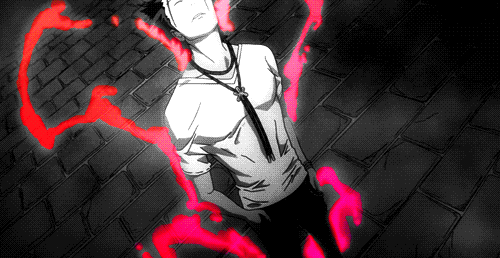THE BORANS
A people who wanders and sets camps all across the world. These are a people that grounds their beliefs within the teachings of peace, quiet and spirituality. However, due to this belief in peace, they tend to lack in millitary power. Infact that is one of the few reasons why the Borans doesn’t have many tribes anymore within Arcas. Another reason why many tribes have died is due to when they move around, they tend to sometimes anger people (though that always depend on the very people). This can create raids and other sorts of harrasments and oppressions. Their religion is based on praying to their ancestors, who the Borans view as gods and demi-gods. They also believe in dead people, like spirits, ghosts and the like. Infact, most of their folk lore is about these strange, spectral beings. The Borans’ tendencies to travel may bring them all around the world, as they camp in forests, mountians, plains, highlands and even deserts and jungles.
Borans tend to have a strangely exotic, yet Highlandish appearance about them. This is because that the people are humans with the majority being Highlandish blood, while the minority of blood is Farfolk.
A common trait among them are their eyes, ranging from dark brown to Amber. They also tend to have green eyes, though it’s more rare than say brown. Their hair is mostly dark to light brown, but is occationaly black. Their skin is usualy guite fair due to how they mostly camped in forests rather than in deserts or other hot climates. However, there still are the occational man or woman with darker skin. There are certain genes that the Borans have picked up. One of these is the higher chance of having freckles, even to adult hood.
While it becomes increasingly difficult to pinpoint to where the culture and religion began, mostly because of the culture becoming older and having lost most information of its origins in the meanwhile. It is said, however, that it all began as a cult in Anthos that believed that their ancestors where the true guardians and god’s of their people. With this new cult, they began practicing prayer and meditation to these new deities, and soon they began their typical behavior of traveling and constantly moving camps from one part of the world to the other. While thet know that wandering to different continents may get them killed (as many other races might be at the same time), they always seems to have survived most of it due to how faithful some of them are in their leaders and Shamans. However, sadly most of the tribes from Anthos have been whiped out, with only a few remaining. One of these tribes are called “In’Kahir”, who pray to the the Second son of Karoh’Tan, Eaok’Foer.
THE BORAN LANGUAGE
Originating as a secret language that the cult used in order to avoid other religious cults and clans from exterminating them. The language the Borans speak now is an evolved, more perfected language of such, having developed over 400 years. The language has become more commonly known to others as ‘Boran’. However, just because this language exists, doesn’t mean that the Boratic people aren’t allowed to speak common. Boran is spoken in the same grammatic structure as common, with a couple of few exceptions that makes the language a bit more unique.
____________________________________________________________________________________________________________________________________________________________________________________________________________________________________________________________________________________________________________________
[WORD] = [Translation, Informal, Variation]
Good day / Hello = Gorath , Gora’ / Go’ (if very informal)
Good bye / Farewell = Goteth , Teth (te’ if very informal)
I, me = Moh My, mine = Mohr (Note that when explaining if it’s someone’s or something’s, you add an ‘r’ at the end of said word)
You = Toh Your = Tohr
We, us, our = Vehr
(Note: This is an exception to the ‘r’ rule)
They, their = Duhr
Yes = Je , – , Jevihr (used as “affirmative”)
No = Ne , – , Nevohr (used as “negatory”)
Maybe = Ere , – , Erih (used as “perhaps”)
Is, am, are = Aeh
Was, were = Tyot (also used as “used to” or “was / were”, but you add an ‘r’ at the end)
Has = Aehr
Will, shall = Niaro (add an ‘r’ at the end when in plural)
Would = Amden (add an ‘r’ when in plural)
Could = Yrih (add an ‘r’ when in plural, like always)
(Note: Do not forget the ‘r’ when it’s in plural!)
Human = Maelih
Elf = Ushif
Dwarf = Midjet (I’m sorry, my dwarven bros)
Orc = Urkih
Halfling = Per’Maelih (basically means “little human)
Kharajyr = Felir’maeh (humanoid cat, or Feline human)
____________________________________________________________________________________________________________________________________________________________________________________________________________________________________________________________________________________________________________________
The Boratic Society
Even a wandering people needs a leader. Their tribes are built on a common leader, shaman, and then in the later and younger tribes; guardians.
All tribes has a leader, also called a Cheiftain, someone who leads the people, takes on grand desicitions and other great burdens. However, the leaders are chosen by the tribe’s shaman, also called a “Voroodou”. The Shaman is the second highest ranking one can get, as they lead the people in a spiritual sence, giving them hope and in most cases cure their wounds with apothecary methods (such as bandaging wounds, using roots and herbs to help with deseases etc). Lastly of the highest three comes the Guardians, known as Shan’kir. They are the sworn guardians, chosen by the Cheiftain and the Voroodou to protect their tribe from outside forces, like animals and other people.
Below these achived and powerful men and women are the tribesmen, women and children. All picking up a profession a dozen of years after birth, they have no special rank, but are usualy treated well by the higher ranks. These tend to be fishermen, gatherers, farmers, traders, blacksmiths, tanners and tailors.
While this people does use Minae to buy and sell outside of their tribes, within their tribes they tend to trade more than buying or selling. This is because they, like their higher-ups believe that one needs to be humble in order to be cared for. This leads to that when someone begins to act cocky, superior or the like, they tend to be scorned at. A way the voroodou tends to fix this is by teaching them lessons. Say, if a lower class fisherman claims that he can catch a big fish within a month, the voroodou tends to demand proof, or perhaps play a riddle or two on him. It all depends on who the voroodou is.
Genders are equal in this society. Women can become a cheiftainess if they are ellected to be one by the head Voroodou. However, when a women gets accepted as a voroodou, she tends to be treated like a nun from Canonism, and can have a hard time rising in rank because of it. Men can have the same problem, being treated like servants and stewards at times rather than being acolytes of a voroodou. However, it is a sad truth that men have an easier time to rise in rank.
____________________________________________________________________________________________________________________________________________________________________________________________________________________________________________________________________________________________________________________
Festives, Cerimonies and the very Religion
As stated previously, the Borans have Shamans. These shamans practice a religion called Karoh’r Lina, which means Karoh’s Teachings. The religion is about praying to their all-mighty ancestors, who had always been known for something great, like deeds.
The shamans are ellected by their current head shaman in each tribe. During the ellection, they must go through certain tasks, questions and the like. Only one or two men or women can be chosen. Upon acceptance, the Voroodou chooses a new nickname for his one to two new acolytes. Usualy an animal, mythical beast or even sometimes names of their ancestors. The reason for this is unknown to the general public. After the cerimony, the whole tribe tends to feast with their newly made acolytes of the head voroodou. Music, meat, bread, cheese and all sorts of foods is presented, icluding some of their personal delicacies, such as; Anikr, which is a well roasted onion with herbs and spices that makes it taste better, alongside some mutton and carrots.
Another cerimony is the one where the head voroodou chooses a son from each lower ranking family (sometimes the guardian’s or the Cheiftan’s family) and have them prove their physical might usualy in a non-lethal way. They have one to four of these winners, the head shaman waits for it to become night, preparing dyes and the like for the warriors. Upon dusk, the voroodou begins to alight a huge bon fire as they walk up to an altar and begin chanting a chant to the demi-god-like grandson of battle. When the chant is done, the shaman will then choose a dye for each new Guardian. Then, the winner can choose to accept their fate as a guarding, dropping their current profession if they choose to be one. As they do, the shaman begins to chant as he begins to paint special tatoo’s on the man’s torso, arms and face. These tatoos shall mean something to them, as they pick up their weapon of choice and begin training the next day by the current head guardian.
THE ANCESTORS
The very basic of their religion. The ancestral family that the Borans believe in so dearly. Viewed as all-mighty, god-like beings that have achived great power and immortality within the stars that litter the sky.
THE FATHER – Karoh’tan, created the people with his own hands and led the first tribe. He is also known as the Flaming Father, due to his abilities of summoning fire with his bare hands.
THE MOTHER – Lillenea. She was able to love even her most evil grandchildren. Also known as the Mother of Love.
THE FIRST SON – Eaok’foer, he was the one who was said to be able to control the weather to a certain extent. Also known as the Father of Storms.
THE SECOND SON – Iok’Tahlir, the one who showed the people how to be loyal, humble and caring for eachother. Also known as the Father of Loyalty.
THE DAUGHTER – Ynieri, known to be the best dancer, singer and entertainer. Also known as the Mother of Fun.
While there are more children of these later four sons and daughter, they are concidered demi-gods amongst them. Stories and tales of this family can be told by the shamans. Either a story about a fight, maybe a prank from one of Ynieri’s children.
Most tribes are known to pray to a specific ancestor. This is because that specific tribe strives for a specific goal. However, they aren’t bound in any way to pray to the main god. However, one tribe in the past was known to have forced its tribesmen to pray to a specific, evil ancestor by force. This can sometimes happen when the cheiftan gets corrupt or perhaps gets the Shaman corrupt. However, there has been few that actually did fall for this tragedy.
ACCEPTANCE OF MAGIC
While magic is generaly accepted in the culture, depending on the tribe, the head Shaman must have approved it and must monitor it. This is because one of the grandchildren of Eaok’foer was “Mysr’I”, the Mother of Magic. She was known to have become corrupted by the very own magic she had created. Due to this, the Karoh’tan asks of all the Shamans to watch the mage within the village grow and halt it if he or she is near corruption from it. Dark magic is NOT accepted within the culture and religion, however. It is rare for the Shaman or leader to practice magic, but the acolytes have been known to be wanting to and in some cases, they have indeed. Some tribes all together banishes it, while some incourages it. It really depends on the leader of it.
____________________________________________________________________________________________________________________________________________________________________________________________________________________________________________________________________________________________________________________
CLOTHING
While it of course also depends on the climate they have settled in, the Borans also have a sence of clothes and fashion that makes them unique. While none of these clothing has a meaning or specific religious meaning (unless it’s the Shaman’s clothing), it certantly is important to know what they find good-looking at appropriate. Do remember that this also changes to what tribe it is, but all tribes follow a similar pattern.
GENERAL: It’s very typical of all Borans to wear something like a cloak, mantle or something that goes ontop and around the upper torso. Clothes in general are also made out of linen, hide and fur, usually not too saturized in color. Their boots usualy range from leather shoes to furry boots. It’s common for women and children to wear sandals instead. Jewelry is rare to see because of that being humble is a socialy deprived thing, but when you do, it’s usually things like amuletes made out of wood and strung on a string, or maybe bronze jewels with stones like granite ingraved into them.
MEN: While in general the only thing that a man would wear is a mantle, since they believe that showing off muscles is manly, they can still have on a thin, sleeve-less shirt that is usualy made of linen. They usualy wear propper, long pants aswell, though short ones aren’t uncommon either.
WOMEN: Most women would wear a thin dress or skirt, made out of linen or hide. If not, they would be wearing a mantle with a concealing top and a skirt. A common fashion trend is to wear a crown of flowers, straw or maybe even just plain grass. There’s also a type of clothing called a wrist-cloth. Women tend to wear this around their wrists to look propper.
CHILDREN: While they do wear what the adults do of their gender, the children tend to wear sandals, sleeved tunics or maybe even a crown if they wanna extra pretty (note that boys tend to do this too).
ARMOUR
While armour isn’t something that one would normaly wear, as mostly it’s used in cerimonies, their armour tend to be tanned leather Muscle Cuirass, hoods with a wooden mask of sorts and leather greaves. The richer or higher ranked men and women tends to have the same set up, but instead in bronze, such as a tanned leather Muscle Cuirass with a bronze overlay, hoods with a bronze mask (usualy well decorated), leather arm guards with bronze plates and then tanned leather greaves with bronze overlay.
When it comes to shields, they tend to have an oval shaped would with a strap on AND a center grip. This is to make it as versatile as one can. The thickness, broad and height varies.
WEAPONS
Most tribesmen and tribeswomen tends to have a mere flint knife as their protection. However, if they happen to have a weapon of sorts, it’d most likely be; a spear (commonly known as Pokih in Boran) or a short, flat hunting bow (Lyu’or). When it comes to the bow’s ammunition, if they’re just hunting they have simple arrows with an oak haft, feathers of any common bird and a flint tip. If made for war, it’s a bronze leaf tip, oak haft and then a bit more high quality feathers.
Swords do exist in the Boratic Culture, it’s just that it’s rare to see it. But if you do, it’s usually a leaf-bladed, guardless shortsword. Quarterstaffs can be seen alongside with Guardians aswell, sometimes with a bronze reinforcement at each end of the staff.
____________________________________________________________________________________________________________________________________________________________________________________________________________________________________________________________________________________________________________________
Architecture
Commoner / Tribesmen
As the tribes travel, they tend to set up camps. Therefore, they use tents because of how quickly and efficently one can set them up. A typical way for them to set them up is by a cliff-side, digging slightly into it as they set the tent up by it and having an opening in the upper tent for campfires, so that there’s a nice fire without it being more-than-enough dangerous. Sometimes, they decide to live in caves instead, doing so by placing down hide mats to soften the ground. Yet again, there’s also a campfire to be seen.
((Please remember that these are just showcases of the typical. Variations of blocks are a thing among different tribes.))
Rare Exceptions
There are times when a tribe decides to settle down “Permanently”. These extremly rare occations come with interesting design of houses and sometimes even market places.
OOC NOTE
Let me know if you guys ever want more soon! It was really fun to introduce this new culture to the public. If you want to know any more specific things, I can either edit and add it in, or you can PM me the questions. Have a great day y’all!!

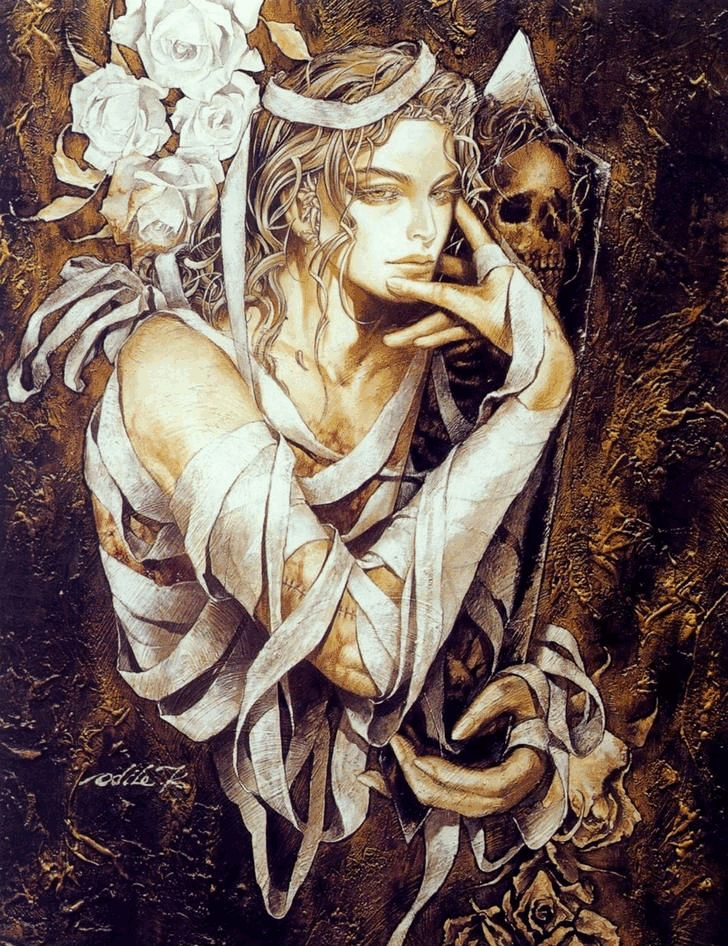
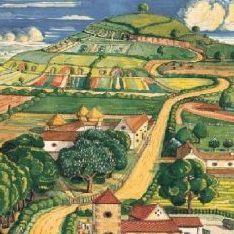
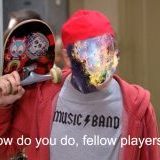









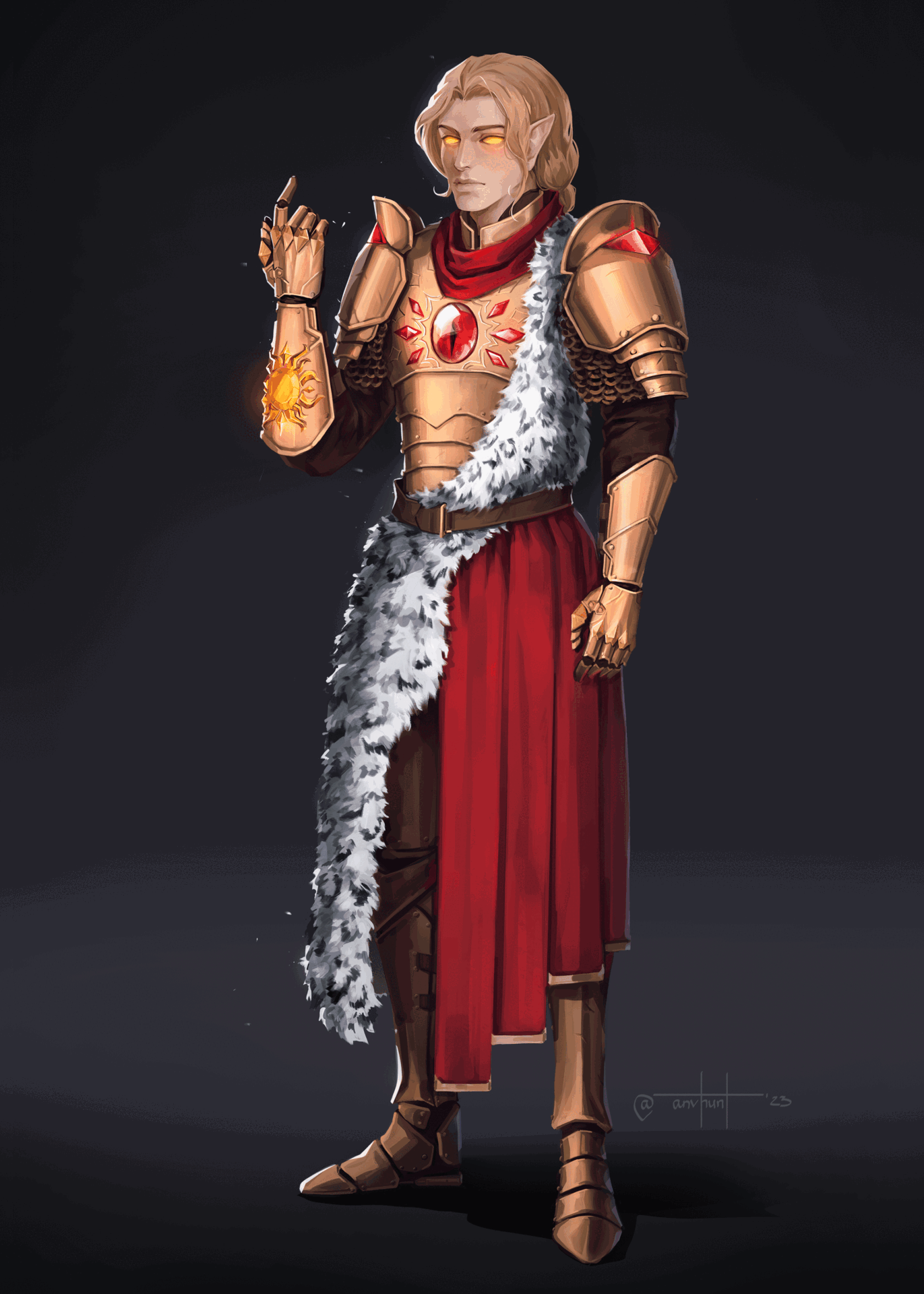




.thumb.gif.8a17fdaf8afb0db93227240719bd8aa7.gif)

.thumb.jpg.8a3d0b12e416957121adf45594bba83c.jpg)
